The Niall Bromage Freshwater Research Unit is located close to the Stirling campus at Buckieburn. The unit is gravity fed from the nearby Buckieburn reservoir which provides overs 2 million gallons (9,090 m3) per day of temperature stable water, drawn from a constant depth all year round.
The facility has a state of the art fully temperature-controlled recirculating aquaculture system RAS, made up of 24 x 0.7m3 tanks which are all fully equipped with automatic feeders, DO / Temperature probes as well as a feed recovery system to collect any uneaten feed and Biolumen lighting system.
On site there is also a dedicated RAS incubation unit / hatchery system with the capacity to hold 250,000 salmonids eggs separately in 24 trays which is fully temperature controlled to provide exact conditions.
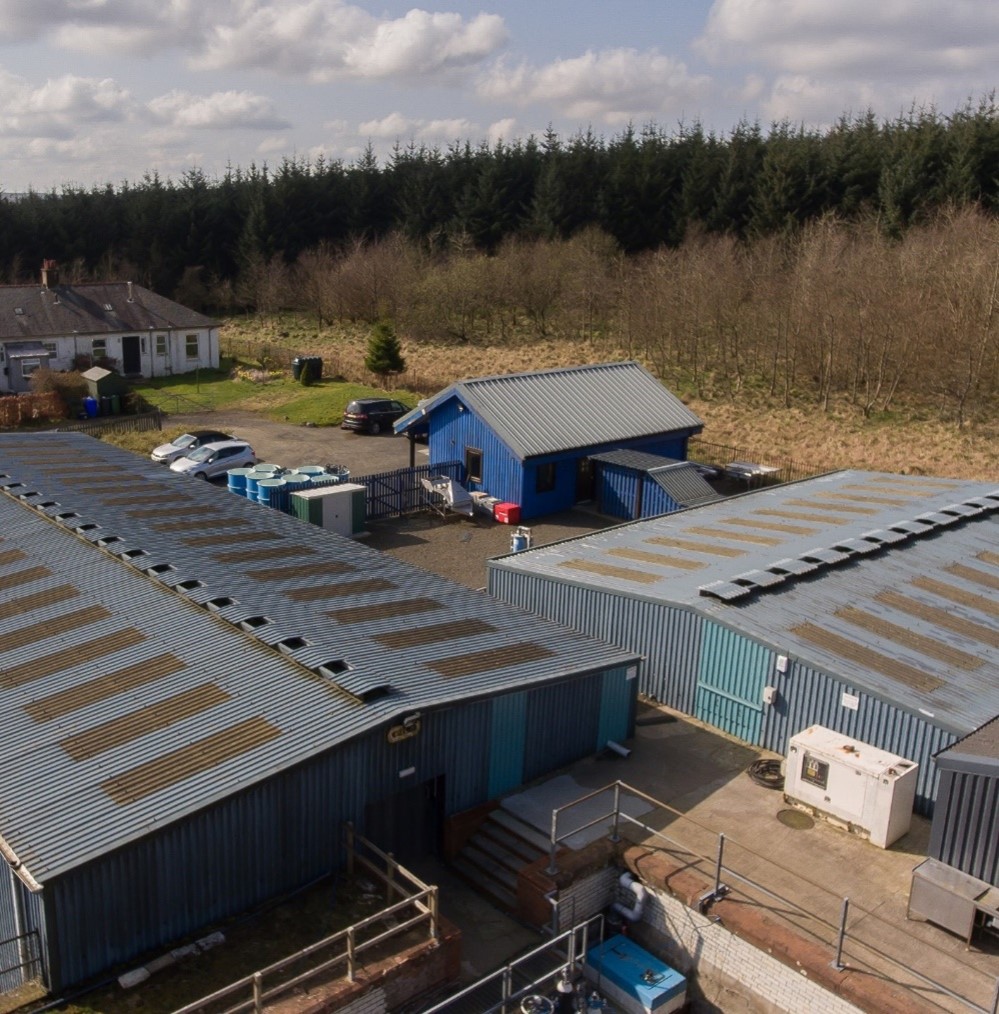
On site there are a total of 36 flow through holding tanks ranging from 0.8m3 to 25m3. These tanks consist of 3 main systems, 18x 0.8m3 tanks, 12x 1.6m3 tanks and 6x 25m3 tanks. All tanks are fitted as standard with a dissolved oxygen / temperature probe, automatic ARVOTec feeder and full Biolumen lights for out of season work or photoperiod manipulation. Both the 0.8 and 1.6m3 systems have either a basic feed and faeces collection systems or swirl separator collection system in place, allowing for exact feed intake to be determined.
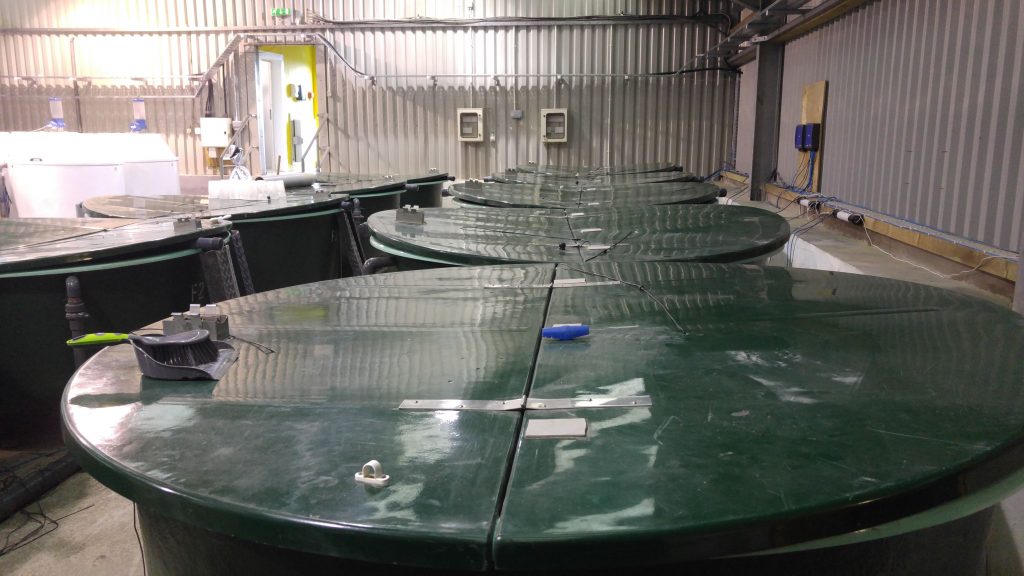
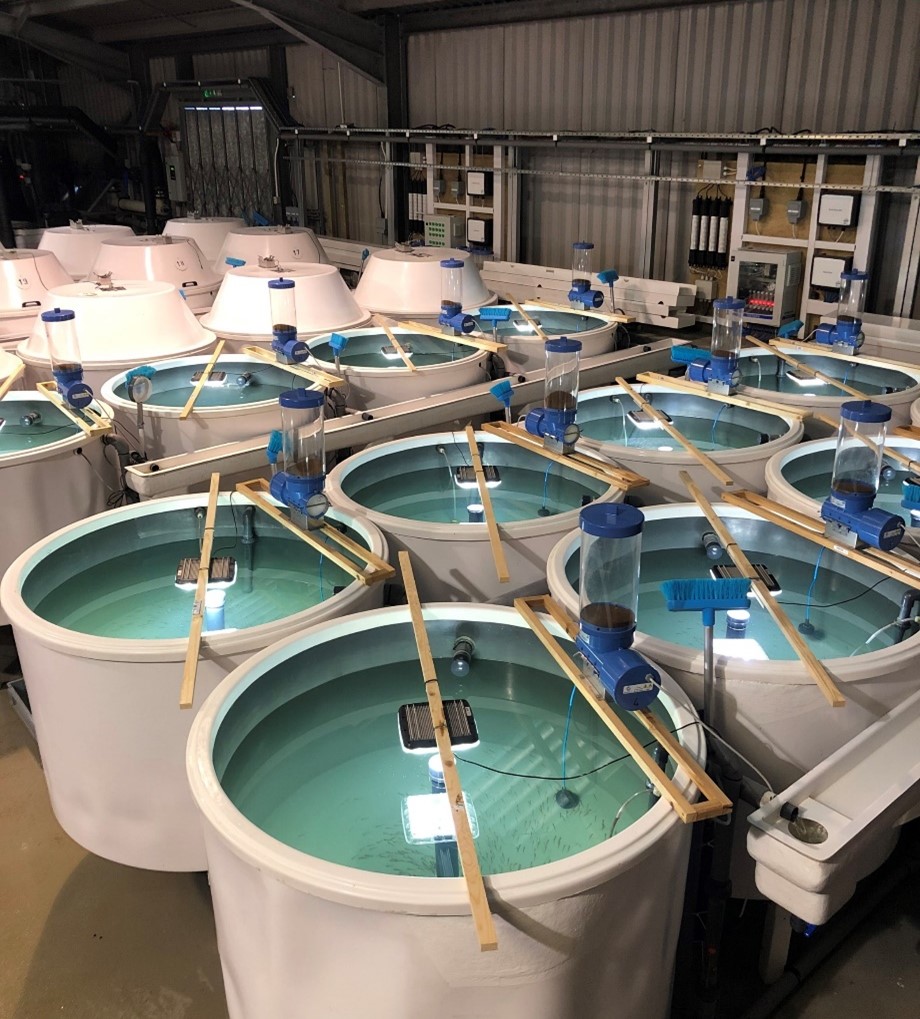
Each of these systems can be run in distinct groups and can be monitored and data logged daily for various water quality parameters (temperature and oxygen). Additional oxygenation is available using a high-capacity oxygen injection system.
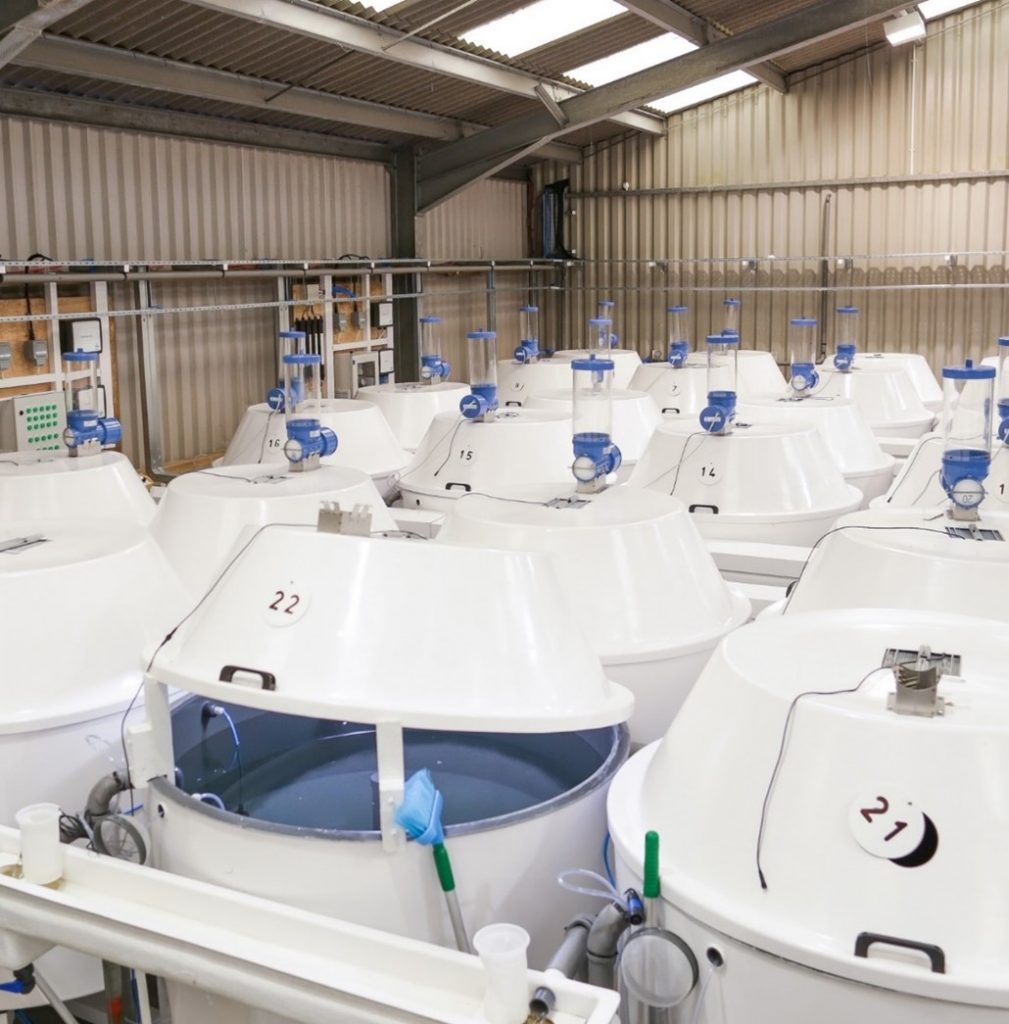
The 24 tank recirculating aquaculture system includes:
- Tanks 0.7 m3 Including Feed and Faeces Collection
- Oxyguard Commander Light with Full Solar and Lunar Control
- Biolumen Lights with Natural Dawn and Dusk Capability
- 24 Hour Oxyguard Feed Controller with ARVOTec Feeders
- In Tank Oxygen Diffusers with Set Point Control
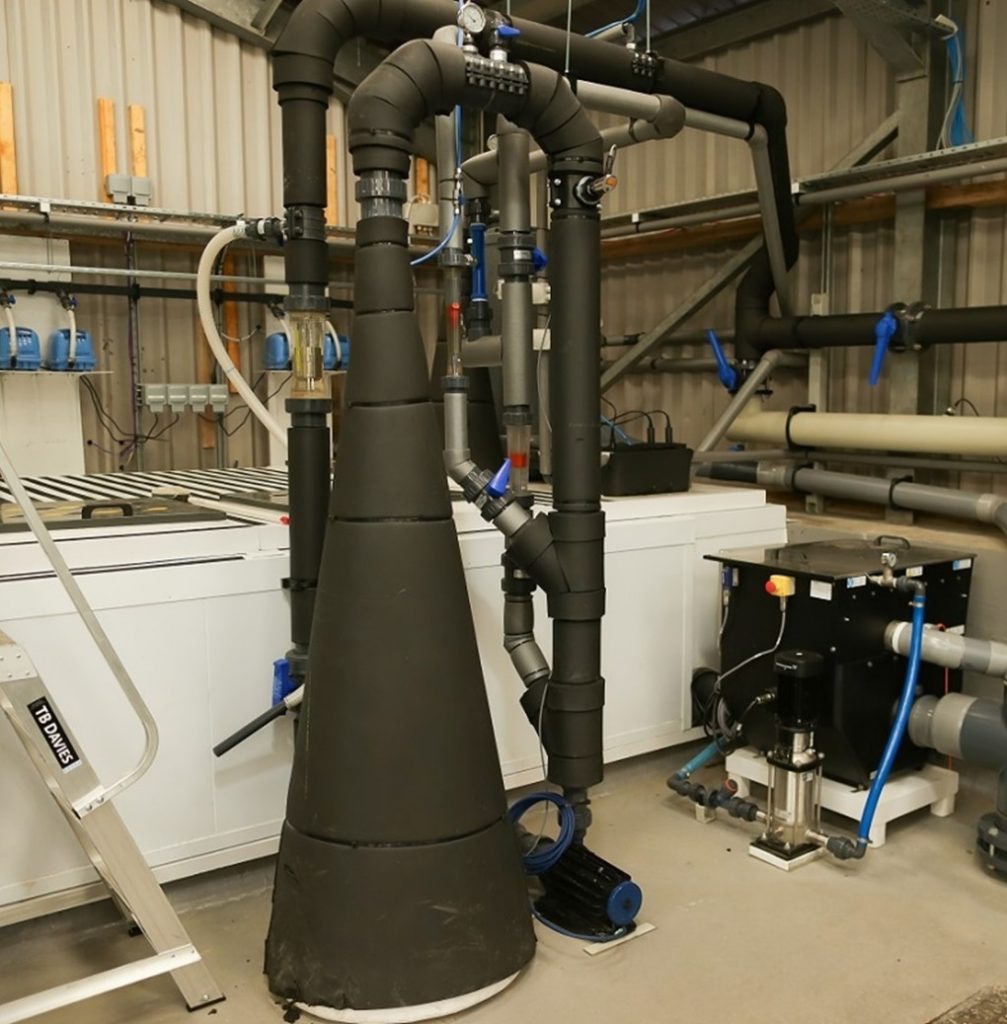
The water treatment systems includes:
- Water Temperature Control by Heating / Cooling System 4°C -16°C
- Micro Dosing of Oxygen and Ozone Using In – System Redox and DO Probes
- Additional UV Sterilization
- Moving Bed Bio-Filter
- Drum Filter to Remove Solid Waste
- Further Protein Skimmer
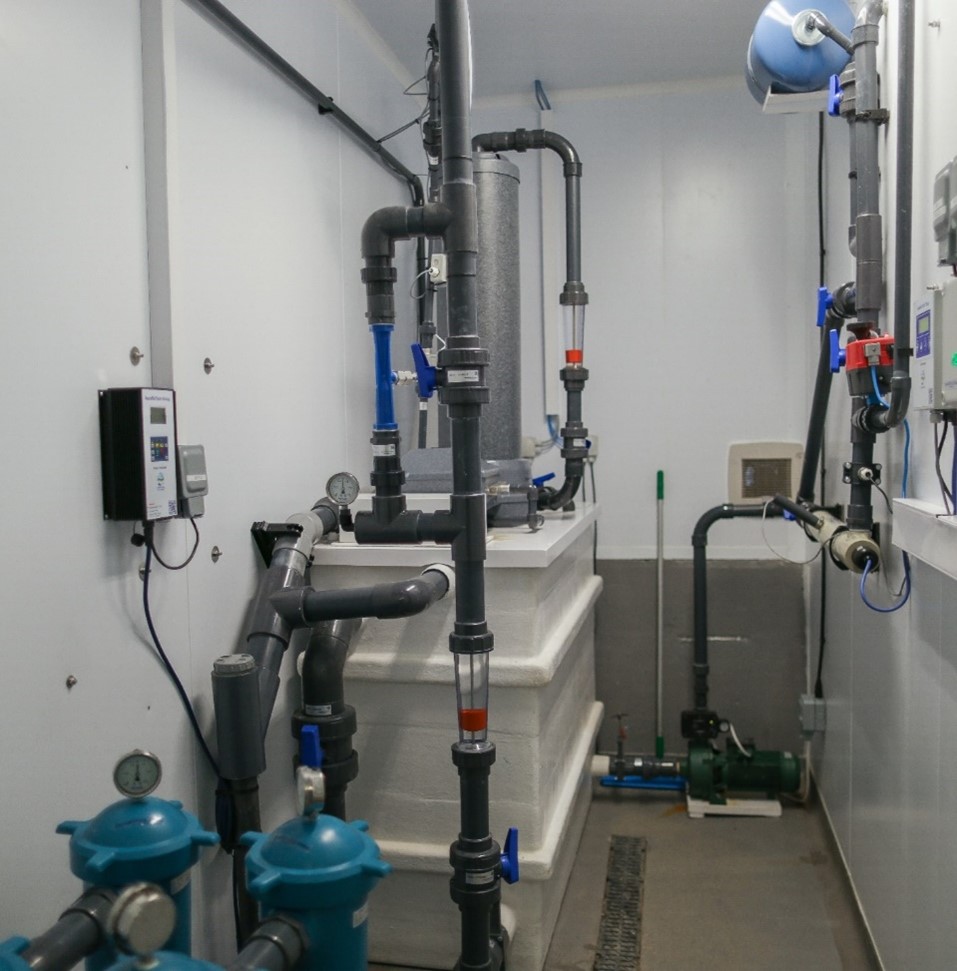
Incoming water is first treated before entering either the hatchery or 24 tank recirculating aquaculture system using the following systems:
- 100 micron / 20 micron sock filters
- Ozonated protein skimmer for removal of micro particles
- UV sterilization and reduction of ozone
- Nano bubble technology
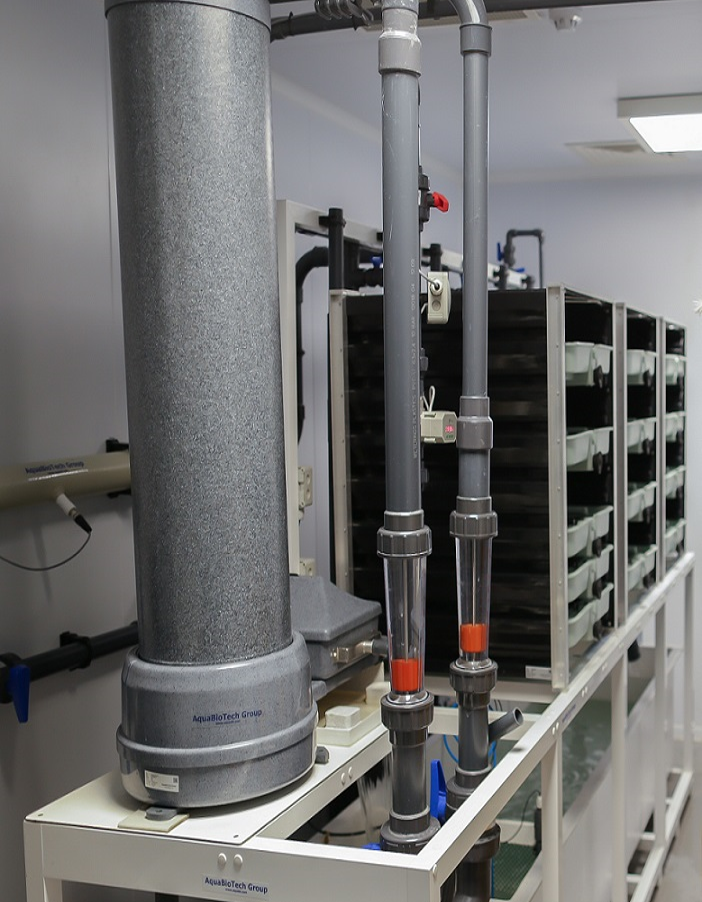
Dedicated hatchery: RAS used for production of research robust stock has:
- 24 Egg Trays In 3 Racks, Either Cascade or Single Source Water Supply (Capacity 10,000 Per Tray)
- Water Is Fully Temperature Controlled (2°C -12°C)
- Ambient Room Temperature Control Including Dehumidifier
The facility has a dedicated sterile room for live fish work as well as a laboratory for further detailed analysis. This feature allows greater flexibility in the timeframes for research experiments, allowing increased capacity to deliver a range of projects.
The facility is fully compliant with UK Home Office legislation in conducting a wide range of research activities.
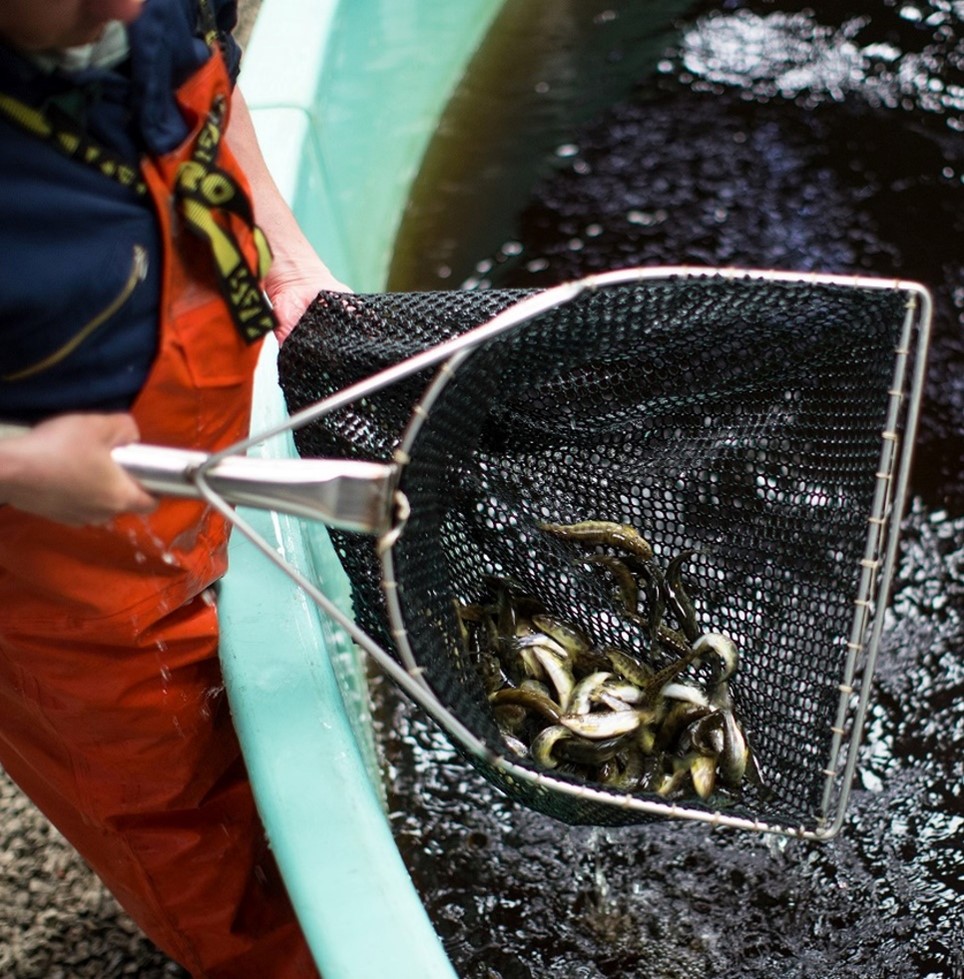
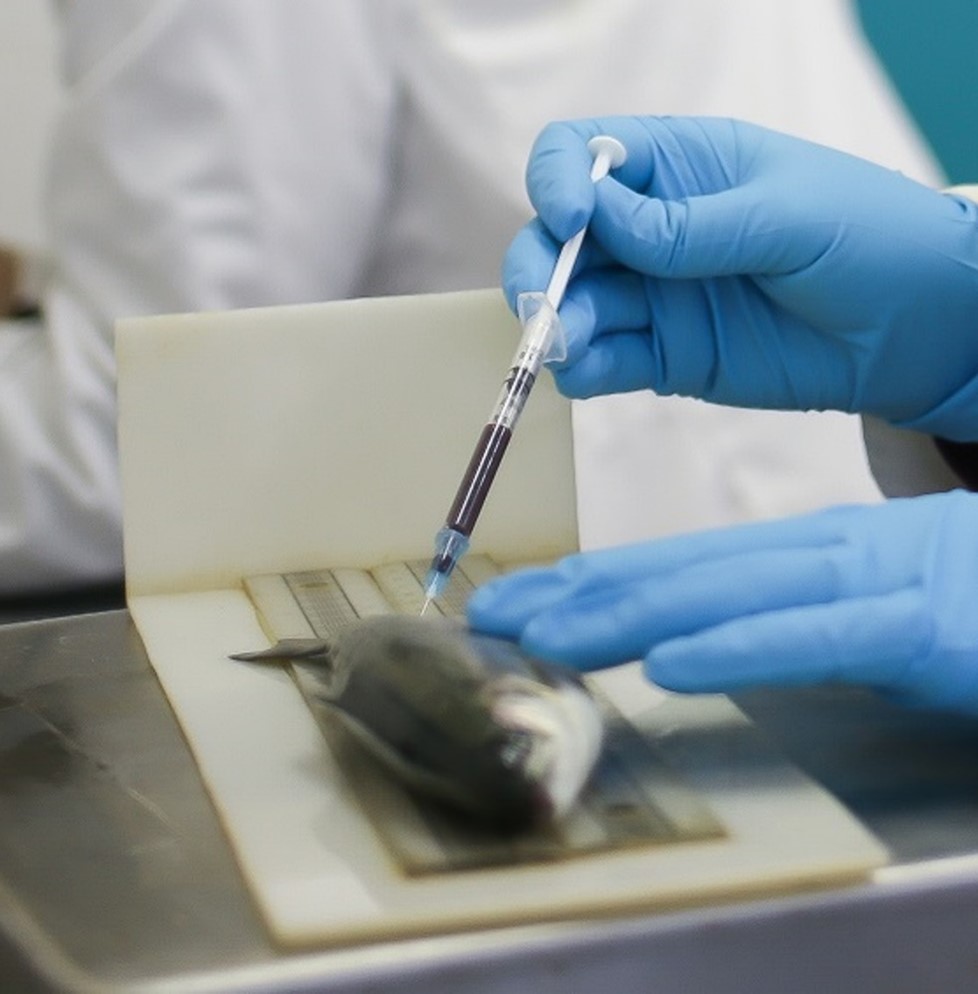
A wide variety of research has been conducted on site recently, such as but not limited to:
- Environmental enrichment (EE) trials, consisting of structural physical enrichment in the form of plastic kelp that has been tested in early life stages of salmon and under normal production hatchery conditions
- Research on determining the impact of new dietary sources of EPA and DHA on salmon health including resistance to pathogens and immune responses. Feeding trials spanning the fully life cycle of salmon with fish being fed diets with ranging inclusion levels of novel protein sources derived from plant or insect
